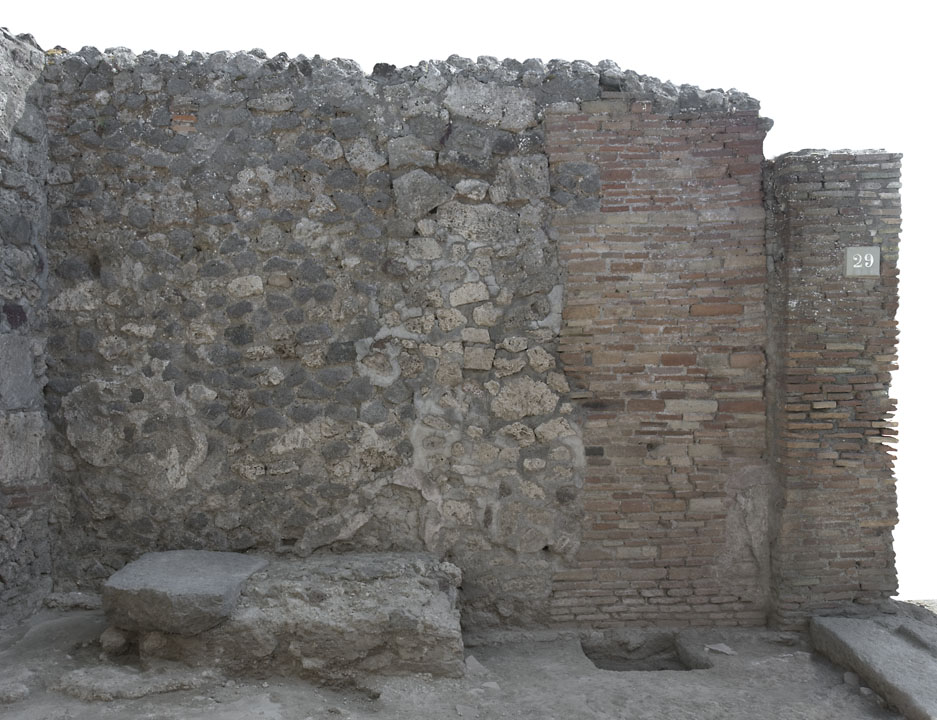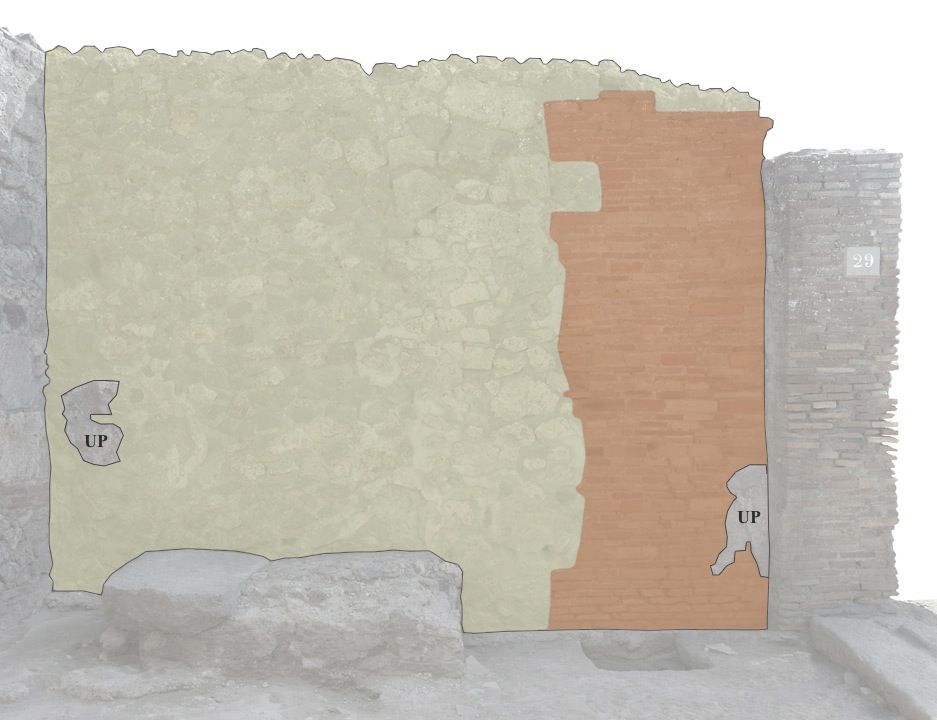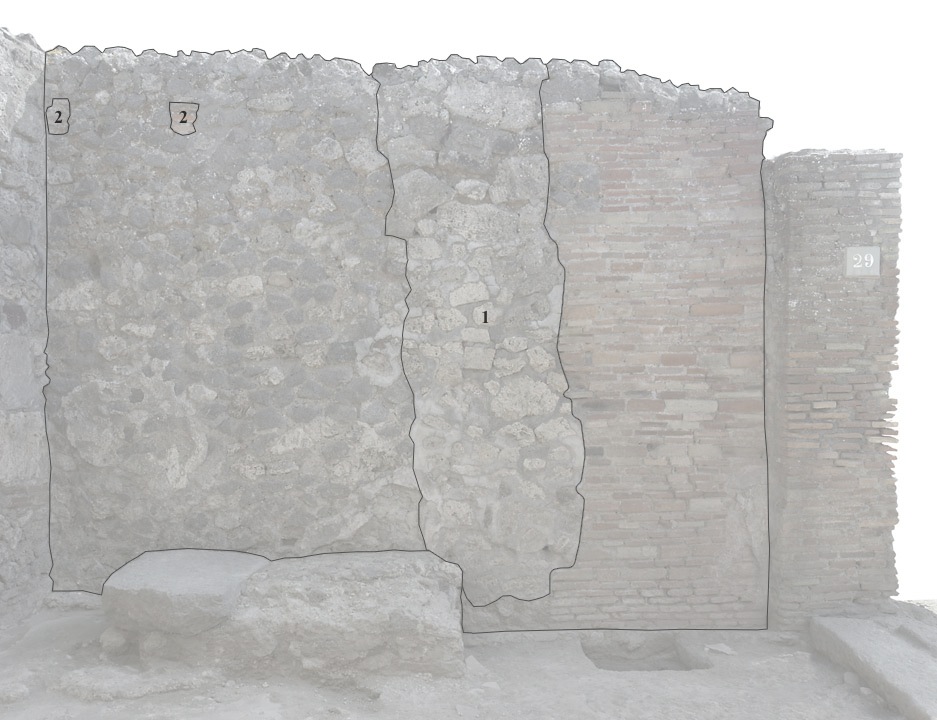South Wall
Description
Mats Holmlund
The wall is circa 4.00 m wide and 3.00 m high at its highest point, and it consists of two distinct parts. The first stretches from the east corner to approximately 2.85 m from that corner. The second one, that is approximately 1.15 m wide, is the remainder of the wall.
The first part of the wall is made in opus incertum and consists of mainly of lava, but also contains some random bits of limestone, cruma, tufa and terracotta tiles. The second part is made in opus testaceum, but in a "quasi-opus listatum"-style. From the floor level up until 0.75 m, the pattern is a bit irregular, but from 0.75 to 2.50 m from the floor level, every fifth row starts with a row of bricks or the thick end of reused roof tiles, and thereafter follows four rows of ordinary terracotta tiles. The bricks or roof tiles vary in size from 0.11 to 0.29 wide and 0.05 to 0.07 m thick/high. The tiles vary in size from 0.04 to 0.23 m wide and 0.02 to 0.04 m thick/high. They vary in colour from beige and yellow to terracotta and brown (there is one almost black circa 0.80 m from the floor level and 0.90 m from the west corner). Some tiles are unevenly burnt with a darker strand in the middle of them.
There are two features in the wall. Approximately 2.00 m from the east corner and to the beginning och the testaceum part of the wall, and from 0.15 m from the floor level to the top of the wall, the wall has been restored. The restored part is probably a repair of a hole from a "bourbon excavation". The repair consists mainly of limestone blocks, but also contains some individual stones of lava, cruma and tufa.
Circa 2.60 m from the floor level in the east corner and 0.70 m from the east corner there are two holes that seem to have been "closed" in ancient times by inserting four tiles and mortar in each of them. The holes are circa 0.15 m wide and 0.20 m high.
There are some possible spolia in the wall. There is one piece of cut tufa located circa 0.90 m from the east corner and 1.40 m from the floor level. It is 0.09 m wide and 0.08 m high. In the reconstructed part of the wall, circa 2.30 m from the east corner and 1.10 m from the floor level, there is a piece of coccio pesto floor inserted in the wall.
The mortar of the incertum part of the wall is brownish grey and contains rather large pieces of lava and limestone (the pieces are between 0.003 and 0.01 m in diameter). The modern mortar of the repaired breach is both dark and light grey, and contains grains of lava. The mortar of the testaceum part of the wall is light grey and contains small grains of lava and limestone (the grains vary in size between 0.001 and 0.003 m in diameter).
There are two areas where the plaster remains on the wall. The first is located 0.10 m from the east corner and 0.60 m from the floor level. It is circa 0.35 m wide and 0.50 m high. Only the subsurface of the plaster remains and it is quite weathered (the stones from the underlying wall is visible in several places). The second area of remaining plaster is located in the west corner and stretches from circa 0.25 m from the floor level up until 0.90 m from said level. It is circa 0.30 m wide at its base and 0.20 m wide at the top, and is held in place at the top at its west side by modern, pinkish mortar. No decoration, colour or graffiti is visible on the surface of the extant plaster.



